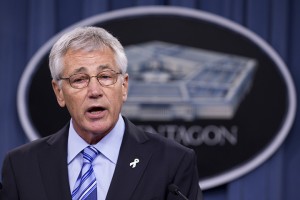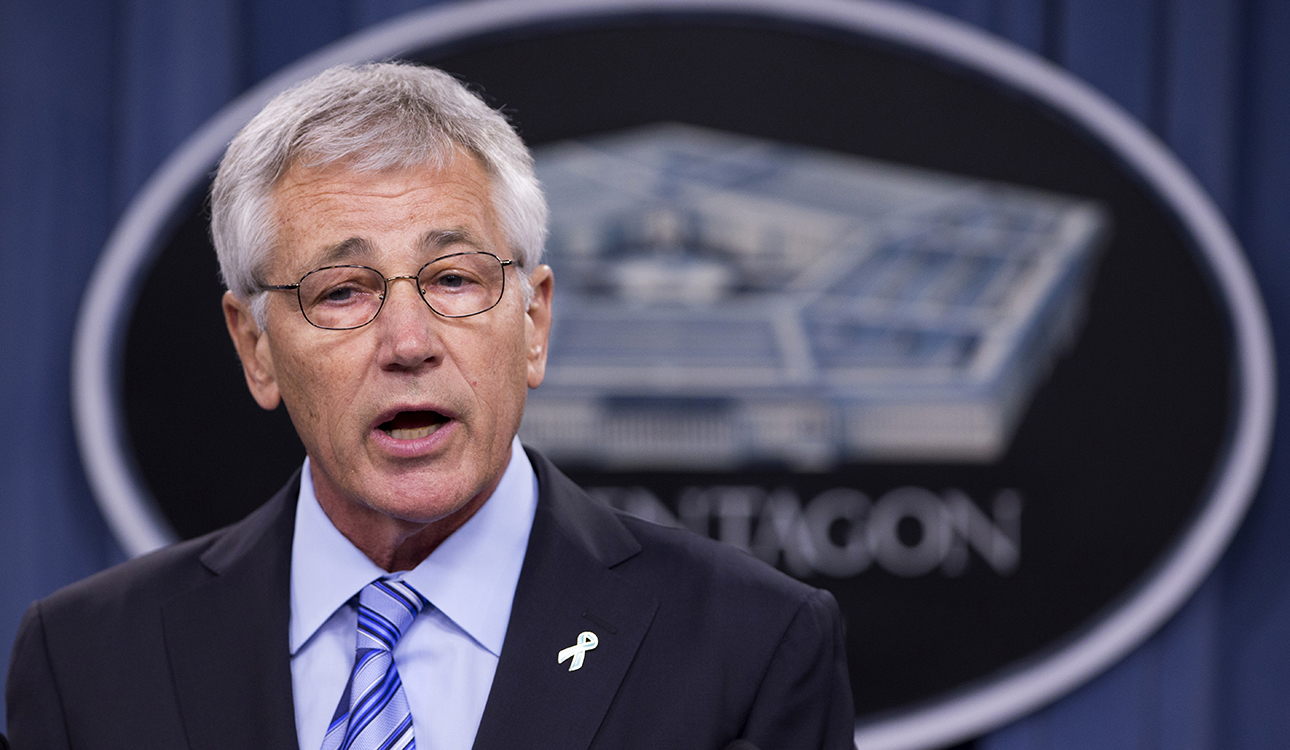
By Lolita C. Baldor
Associated Press
WASHINGTON — Reports by members of the military of sexual assaults jumped by an unprecedented 50 percent last year, in what Defense Secretary Chuck Hagel declared a “clear threat” to both male and female service members’ lives and well-being.
The latest numbers reflected an aggressive campaign by the Pentagon to persuade victims to come forward, but Hagel and others said Thursday they need to do more to get men to report assaults — a challenge in a military culture that values strength. Hagel said an estimated half of sexual-assault victims in the military are men, yet only 14 percent of reported assaults involve male victims.
Hagel told a news conference he has ordered Pentagon officials to increase their efforts to get male victims to report sexual abuse and also has asked the military services to review their alcohol sales and policies. In as many as two-thirds of reported sexual assault cases, alcohol is involved.
“We have to fight the cultural stigmas that discourage reporting and be clear that sexual assault does not occur because a victim is weak, but rather because an offender disregards our values and the law,” Hagel said.
Officials said they believe the number of male victims is greatly under-reported because of anonymous surveys conducted among military members. A 2012 survey found that about 26,000 service members said they were victims of some type of unwanted sexual contact or assault. A key finding in that survey was that, in sheer numbers, more men than women said they had been assaulted.
About 6.8 percent of women surveyed said they were assaulted and 1.2 percent of the men. But there are vastly more men in the military; by the raw numbers, a bit more than 12,000 women said they were assaulted, compared with nearly 14,000 men.
Defense officials said that male victims often worry that complaining will make people think they are weak and trigger questions about their sexual orientation. In most cases, however, sexual orientation has nothing to do with the assault and it’s more an issue of power or abuse.
“There is still a misperception that this is a women’s issue and women’s crime,” said Nate Galbreath, the senior executive adviser for the Pentagon’s sexual assault prevention office. “It’s disheartening that we have such a differential between the genders and how they are choosing to report.”
The military, Galbreath said, needs to get the message out.
“It’s not the damsel in distress; it’s your fellow service member that might need you to step in,” he said, adding that troops need to treat such a request for help like any other need for aid, just like on the battlefield.
While the number of reported assaults shot up sharply in 2013, defense officials said that based on survey data and other information, they believe the increase was largely due to victims feeling more comfortable coming forward. Under the military’s definition, a sexual assault can be anything from unwanted sexual contact, such as inappropriate touching or grabbing, to sodomy and rape.
Separately on Thursday, the U.S. Department of Education announced it was going to investigative 55 colleges and universities for the way they handle sexual abuse allegations by their students.
As for the military, Hagel said he was ordering six initiatives, including the review of alcohol sales and policies. He says that review must address the risks of alcohol being used as a weapon by predators who might ply a victim with drinks before attacking.
“Sexual assault is a clear threat to the lives and the well-being of the women and men who serve our country in uniform. It destroys the bonds of trust and confidence that lie at the heart of our armed forces,” said Hagel.
The plans call for the military services to step up efforts to encourage troops to intervene in assault situations and work with military bases and local communities to better train bar workers and promote more responsible alcohol sales.
Overall, there were 5,061 reports of sexual abuse filed in the fiscal year that ended Sept. 30, compared with 3,374 in 2012, for a 50 percent increase. About 10 percent of the 2013 reports involved incidents that occurred before the victims joined the military, up from just 4 percent in 2012.
Over the past two years, the military services have tried to increase awareness. Phone numbers and contact information for sexual assault prevention officers are plastered across military bases, including inside the doors of bathroom stalls. And top military officers have traveled to bases around the world speaking out on the issue.
Officials said prosecutions also have increased. Galbreath said the military was able to take some action against 73 percent of accused people who were subject to the military justice system. In 2012 it was 66 percent. Some cases involved alleged assailants who were not in the military so were not subject to commander’s actions or military courts.
Sexual assault has been a front-burner issue for the Pentagon, Congress and the White House over the past year, triggering Capitol Hill hearings and persistent questions about how effectively the military was preventing and prosecuting assaults and how well it was treating the victims. Fueling outrage have been high-profile assault cases and arrests, including incidents involving senior commanders, sexual assault prevention officers and military trainers.
At the same time, the military has long struggled to get victims to report sexual assault in a stern military culture that emphasizes rank, loyalty and toughness. Some victims have complained they were afraid to report assaults to ranking officers for fear of retribution, or said that their initial complaints were rebuffed or ignored.






